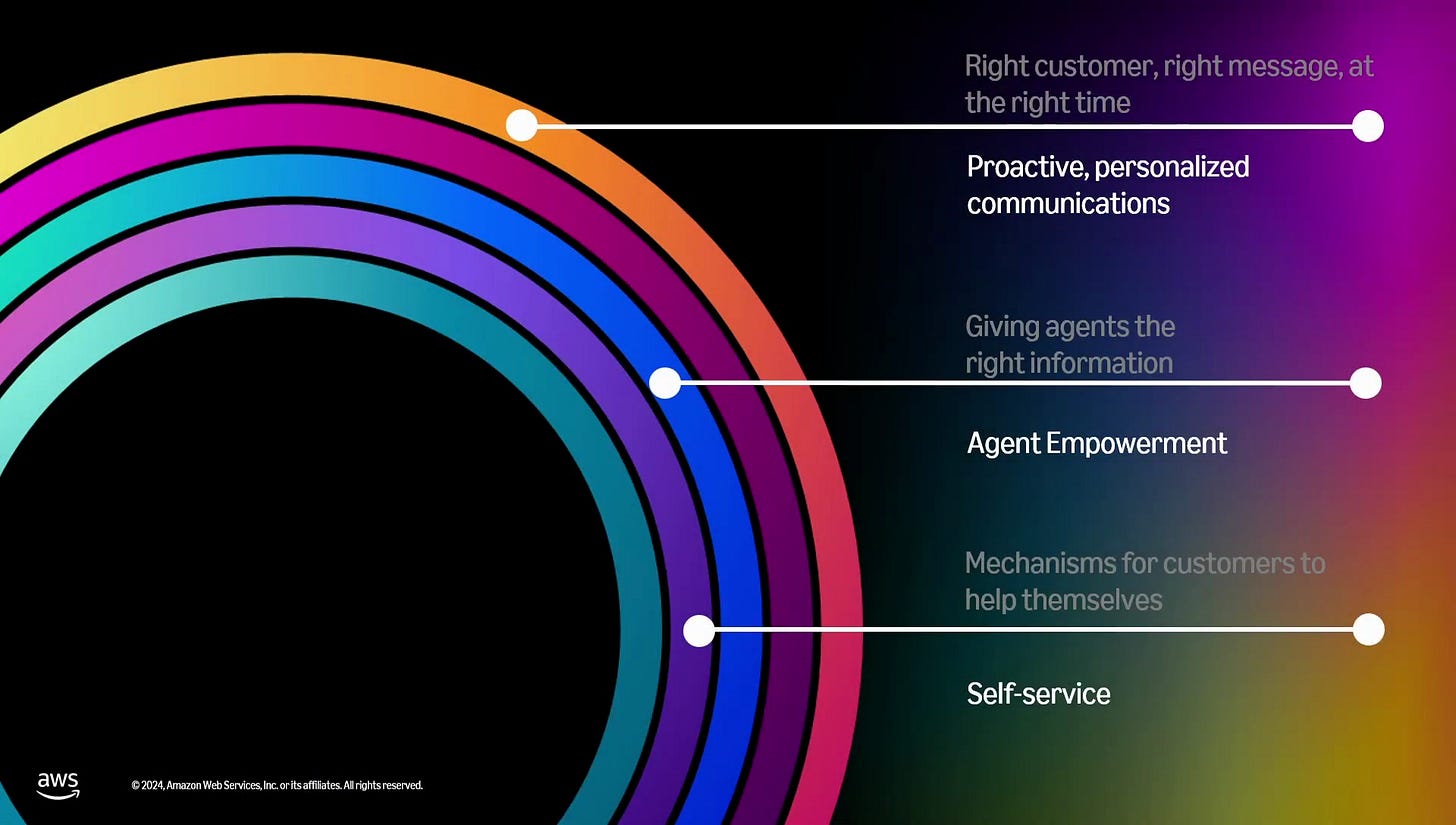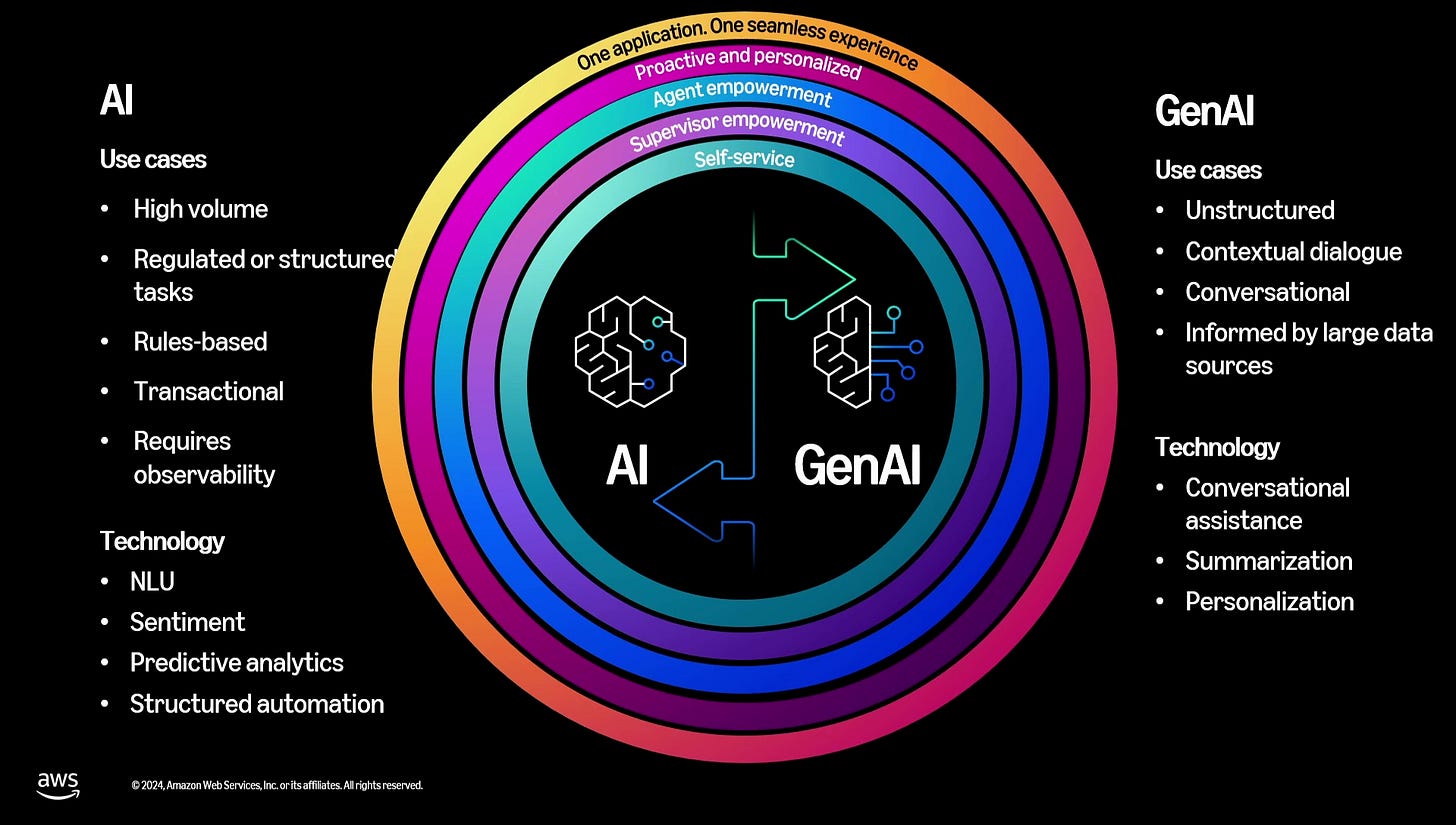AWS re:Invent event earlier this month served as my annual checkpoint to assess Amazon Connect and AWS's progress in the contact center space.
Over the last couple of years, AWS has methodically expanded its solution set horizontally, building one of the industry's broadest suites. Accordingly, the company's narrative has been focused on positioning this portfolio as a complete solution, delivering integrated experiences to the four key stakeholders: customers, agents, supervisors, and administrators.
This year felt different with Pasquale DeMaio, VP of AWS Customer Experience Services, articulating a vision for the industry. He anchored it in Amazon's core principles for customer service: resolve customer issues in the moment, while relentlessly addressing root causes. When defects cannot be fully eliminated, implement preventive measures that minimize customer impact.
Pasquale highlighted three key focus areas: delivering proactive, personalized communications to customers; empowering agents; and enabling effective self-service. While agent empowerment has been a consistent theme for AWS, the enhanced capabilities in proactive communications and self-service represent significant new developments worth discussing.
Proactive communication has been the holy grail of great CX, enabling organizations to make unavoidable problems as painless as possible for customers. Yet three key barriers have historically hindered implementation. First, traditional models rely heavily on agents, straining organizations already overwhelmed with interaction volumes. Second, effective proactive outreach requires a consolidated view of customer data that's typically scattered across multiple systems. Third, organizations lack the tools to segment customers precisely and craft targeted, relevant communications.
AWS shared its approach to democratizing proactive outreach and how it is tackling these challenges. At the core is Customer Profiles — a mini-CDP that consolidates data from 70 sources, using algorithms and fuzzy logic to merge identities, and generative AI to map data elements. The company has also embedded Generative AI into its Outbound Campaigns software, allowing users to create campaigns using natural language. The solution integrates Outbound Campaigns with Amazon Connect, Amazon SES, and Pinpoint — replacing human-driven engagement with event-triggered communications using SMS, email, voicemail drops, or agent-assisted calls.
On the self-service front, in an era where GenAI is often touted as the cure-all technology, I commend Pasquale for keeping us grounded. He shared an inspiring slide highlighting what Conversational AI and Generative AI excel at and how they complement each other. With Amazon Q for Connect—AWS's GenAI solution—now available for customer self-help, Pasquale hinted at the next frontier in self-service: combining the various AI and workflow technologies. Conversational AI handles customer self-service interactions at scale. When intent recognition reaches its limits, the system transitions to generative AI responses, with agent escalation as needed. For cases requiring specific steps, the system shifts to prescriptive workflows, using Step-by-step Guides to walk customers through them.
AWS’ shift from showcasing product capabilities to sharing a vision for enterprise customer service modernization marks its maturation from a solution provider into an industry leader.





